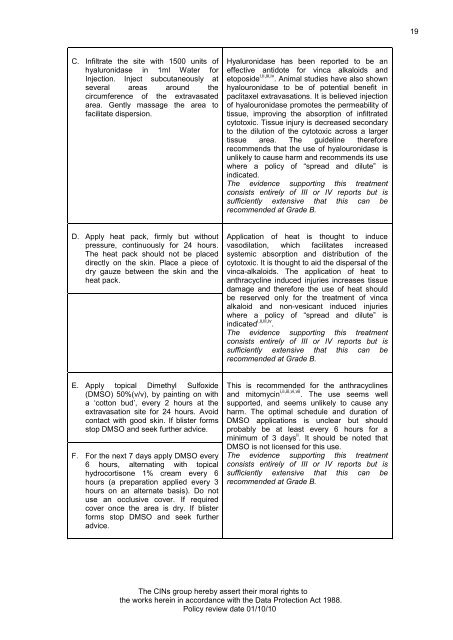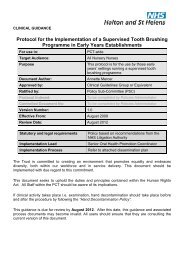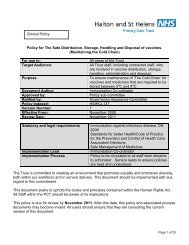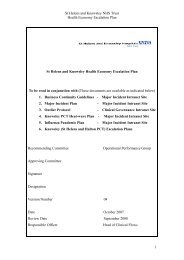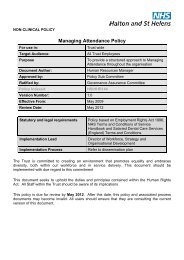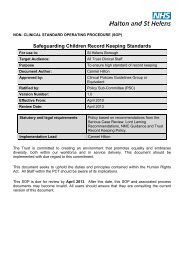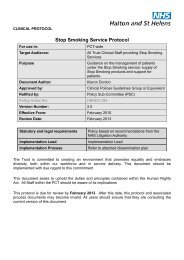Collaborative Intravenous Nursing Service (CINS) Guidelines
Collaborative Intravenous Nursing Service (CINS) Guidelines
Collaborative Intravenous Nursing Service (CINS) Guidelines
- No tags were found...
Create successful ePaper yourself
Turn your PDF publications into a flip-book with our unique Google optimized e-Paper software.
19C. Infiltrate the site with 1500 units ofhyaluronidase in 1ml Water forInjection. Inject subcutaneously atseveral areas around thecircumference of the extravasatedarea. Gently massage the area tofacilitate dispersion.Hyaluronidase has been reported to be aneffective antidote for vinca alkaloids andetoposide i.ii,iii,iv . Animal studies have also shownhyalouronidase to be of potential benefit inpaclitaxel extravasations. It is believed injectionof hyalouronidase promotes the permeability oftissue, improving the absorption of infiltratedcytotoxic. Tissue injury is decreased secondaryto the dilution of the cytotoxic across a largertissue area. The guideline thereforerecommends that the use of hyalouronidase isunlikely to cause harm and recommends its usewhere a policy of “spread and dilute” isindicated.The evidence supporting this treatmentconsists entirely of III or IV reports but issufficiently extensive that this can berecommended at Grade B.D. Apply heat pack, firmly but withoutpressure, continuously for 24 hours.The heat pack should not be placeddirectly on the skin. Place a piece ofdry gauze between the skin and theheat pack.Application of heat is thought to inducevasodilation, which facilitates increasedsystemic absorption and distribution of thecytotoxic. It is thought to aid the dispersal of thevinca-alkaloids. The application of heat toanthracycline induced injuries increases tissuedamage and therefore the use of heat shouldbe reserved only for the treatment of vincaalkaloid and non-vesicant induced injurieswhere a policy of “spread and dilute” isindicated i,ii,iii,iv .The evidence supporting this treatmentconsists entirely of III or IV reports but issufficiently extensive that this can berecommended at Grade B.E. Apply topical Dimethyl Sulfoxide(DMSO) 50%(v/v), by painting on witha ‘cotton bud’, every 2 hours at theextravasation site for 24 hours. Avoidcontact with good skin. If blister formsstop DMSO and seek further advice.F. For the next 7 days apply DMSO every6 hours, alternating with topicalhydrocortisone 1% cream every 6hours (a preparation applied every 3hours on an alternate basis). Do notuse an occlusive cover. If requiredcover once the area is dry. If blisterforms stop DMSO and seek furtheradvice.This is recommended for the anthracyclinesand mitomycin i,ii,iii,vi,vii . The use seems wellsupported, and seems unlikely to cause anyharm. The optimal schedule and duration ofDMSO applications is unclear but shouldprobably be at least every 6 hours for aminimum of 3 days ii . It should be noted thatDMSO is not licensed for this use.The evidence supporting this treatmentconsists entirely of III or IV reports but issufficiently extensive that this can berecommended at Grade B.The CINs group hereby assert their moral rights tothe works herein in accordance with the Data Protection Act 1988.Policy review date 01/10/10


